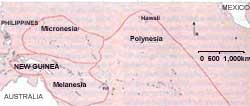Sharing the blame
 the extinction of wildlife due to the harm caused by human activities in the modern world is well-documented and widely-known. For the more conspicuous groups of birds and mammals, rates of extinction have been estimated at about one species per year. Since the total number of species of living organisms is 2,000 times the number of birds and mammals, the overall rates of extinction may even exceed five species per day. With the continued destruction of tropical rainforests around the world and the higher susceptibility of lower forms of life to extinction, global extinction rates are expected to reach 100 species per day by the end of the 20th century.
the extinction of wildlife due to the harm caused by human activities in the modern world is well-documented and widely-known. For the more conspicuous groups of birds and mammals, rates of extinction have been estimated at about one species per year. Since the total number of species of living organisms is 2,000 times the number of birds and mammals, the overall rates of extinction may even exceed five species per day. With the continued destruction of tropical rainforests around the world and the higher susceptibility of lower forms of life to extinction, global extinction rates are expected to reach 100 species per day by the end of the 20th century.
However, it is now coming to light that the issue of extinction of species is not merely a product of the present-day human's prerogative. The world's pre-historic people appear to have contributed their own bit to species extinction. The presence of bones of birds that are known to be extinct, at archeological sites in Pacific islands show that the human-made biodiversity crisis began thousands of years ago.
The colonisation of Melanesia, Micronesia and Polynesia appears to have begun about 30,000 years ago and was virtually complete nearly 1,000 years ago. The clearing of forests, cultivation of crops, rearing of domestic animals and hunting of wildlife are some of the activities carried out by both pre-historic and present-day humans which can seriously impact the populations of certain species and lead to a reduction in their populations. The introduction of new predators and especially new pathogens
Related Content
- Look at Consumption When Assigning Blame for Global Warming, Study Says
- India can't blame global environment alone for poor export performance: Crisil
- Diesel cars in London increase despite air pollution warnings
- Urbanisation, rural–urban migration and urban poverty
- Mainstreaming gender in climate change adaptation
- Pakistan State of Environment Report: The Monthly Overview, November, 2013
